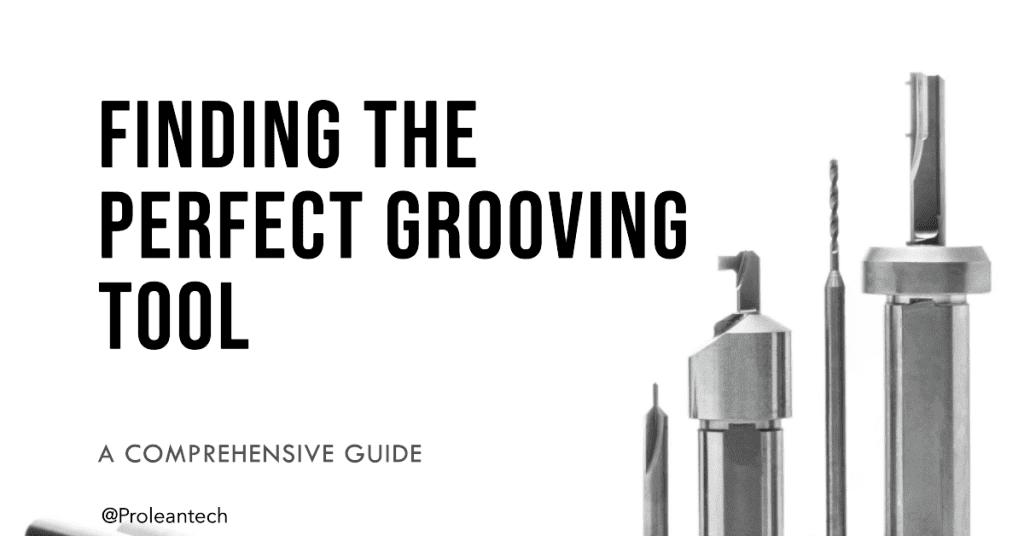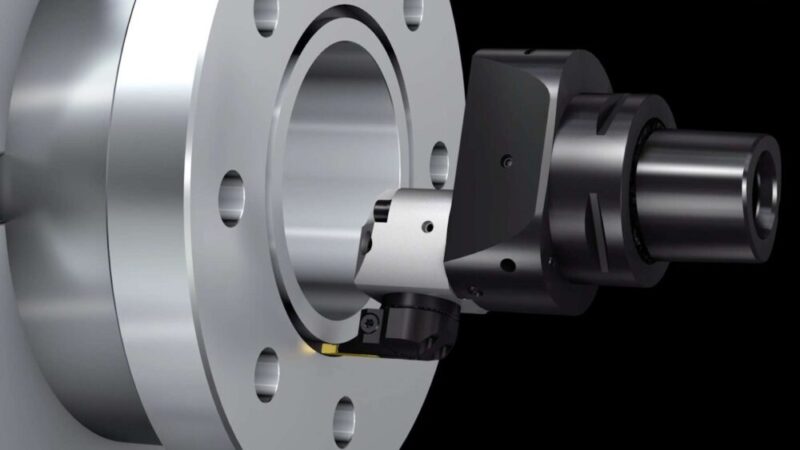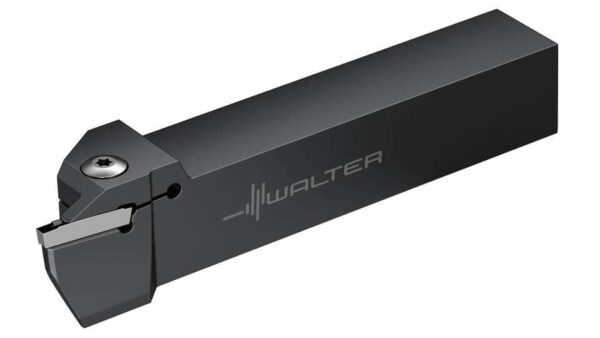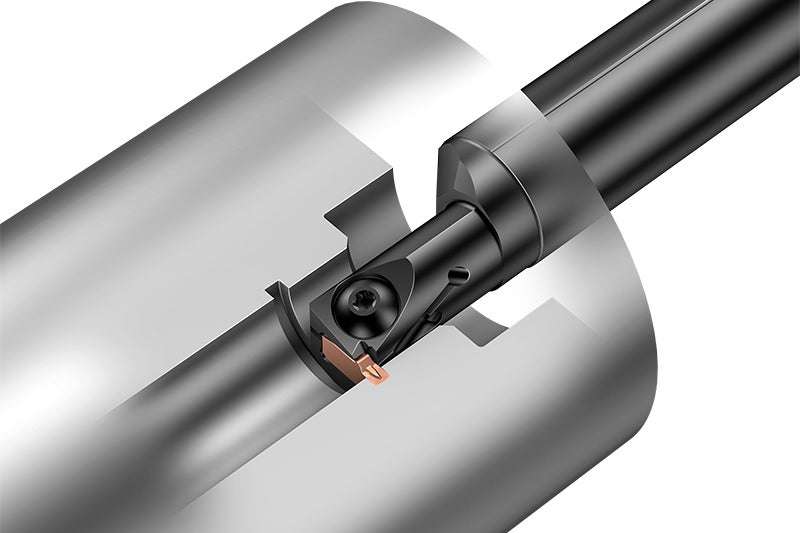“Grooving tools are essential instruments in the metalworking and manufacturing industries. These specialized cutting tools are designed to create grooves or channels in various materials, such as metal, plastic, and wood. Grooving tools are commonly used for applications such as parting, recessing, and undercutting. Understanding the different types of grooving tools and their features is crucial for choosing the right tool for your specific application.”
In this comprehensive guide, readers will be introduced to the various types of grooving tools, including external, internal, and ID grooving tools. The key factors to consider when choosing a grooving tool will be discussed, as well as the importance of grooving tool inserts, such as Kennametal grooving inserts. A closer look at external, internal, and ID grooving tools will be provided, along with the top brands for grooving tools. Lastly, maintenance and care for your grooving tools will be covered, followed by a conclusion to help you find the perfect grooving tool for your needs.
Types of Grooving Tools: External, Internal, and ID Grooving Tools
Face grooving tool on action
There are three primary types of grooving tools: external, internal, and ID grooving tools. Each type of grooving tool is designed for specific applications and materials. The following sections will provide a brief overview of each type of grooving tool.
1. External Grooving Tools
External grooving tools are designed for cutting grooves on the outer diameter of a workpiece. These tools are typically used for parting, recessing, and undercutting operations. External grooving tools are available in various sizes and shapes, allowing for a wide range of grooving operations.
2. Internal Grooving Tools
Internal grooving tools, as their name suggests, are designed for cutting grooves on the inner diameter of a workpiece. These tools are commonly used for applications such as boring, threading, and profile turning. Internal grooving tools are also available in different sizes and shapes to suit various grooving operations and materials.
3. ID Grooving Tools
ID grooving tools, or inside-diameter grooving tools, are a specialized type of internal grooving tool specifically designed for cutting grooves on the inner diameter of a workpiece. These tools are typically used for sealing applications, such as O-ring grooves, and are essential when working with small diameters or tight tolerances.
Key Factors to Consider
When selecting the perfect grooving tool for your needs, it’s essential to consider several key factors. These factors will ensure that you choose the right tool for your specific application and material.
| Factor | Description |
|---|---|
| Material | Grooving tools are designed for specific materials, such as metal, plastic, or wood. Ensure that the grooving tool you select is compatible with the material you will be working with. |
| Groove Width and Depth | Different grooving tools are designed to create grooves of varying widths and depths. Ensure that the grooving tool you select can accommodate the required groove width and depth for your specific application. |
| Tool Holder Compatibility | Choose a grooving tool that can be securely mounted in your tool holder to ensure proper performance and safety during operation. |
External Grooving Tools
External grooving tools are designed for cutting grooves on the outer diameter of a workpiece. These tools are typically used for parting, recessing, and undercutting operations. External grooving tools are available in various sizes and shapes, allowing for a wide range of grooving operations.
When selecting an external grooving tool, it’s essential to consider the material of the workpiece, desired groove width and depth, and tool holder compatibility. Additionally, ensure that the external grooving tool is compatible with your preferred grooving tool inserts, such as Kennametal grooving inserts.
External grooving tools are commonly used in industries such as automotive, engine part manufacturing, aerospace, and general manufacturing. These tools are essential for creating precise and accurate grooves on various materials, ensuring proper fit and function for various components.
Internal Grooving Tools and Their Applications
Internal grooving tools are designed for cutting grooves on the inner diameter of a workpiece. These tools are commonly used for applications such as boring, threading, and profile turning. Internal grooving tools are also available in different sizes and shapes to suit various grooving operations and materials.
When selecting an internal grooving tool, consider the material of the workpiece, desired groove width and depth, and tool holder compatibility. Additionally, ensure that the internal grooving tool is compatible with your preferred grooving tool inserts, such as Kennametal grooving inserts.
Internal grooving tools are commonly used in industries such as oil and gas, medical, and aerospace. These tools are essential for creating precise and accurate grooves on various materials, ensuring proper fit and function for various components.
ID Grooving Tools
ID grooving tool
ID grooving tools, or inside-diameter grooving tools, are a specialized type of internal grooving tool specifically designed for cutting grooves on the inner diameter of a workpiece. These tools are typically used for sealing applications, such as O-ring grooves, and are essential when working with small diameters or tight tolerances.
ID grooving tools offer several key benefits, including:
- Precise and accurate grooving: These tools are designed to provide precise and accurate grooving on the inner diameter of a workpiece, ensuring proper fit and function for various components.
- Reduced tool wear: ID grooving tools are designed to reduce tool wear, allowing for extended tool life and lower replacement costs.
- Wide range of grooving applications: ID grooving tools are available in various sizes and shapes, allowing for a wide range of grooving operations on various materials.
When selecting an ID grooving tool, consider the material of the workpiece, desired groove width and depth, and tool holder compatibility. Additionally, ensure that the ID grooving tool is compatible with your preferred grooving tool inserts, such as Kennametal grooving inserts.
ID grooving tools are commonly used in industries such as automotive, aerospace, and medical. These tools are essential for creating precise and accurate grooves on the inner diameter of various components, ensuring proper fit and function.
Top Brands for Grooving Tools
There are many top brands for grooving tools, each offering its own unique features and benefits. Some of the top brands include:
| Brand | Types of Grooving Tools |
|---|---|
| Kennametal | External, internal, and ID grooving tools |
| Sandvik Coromant | Parting and grooving systems, internal grooving tools, and ID grooving tools |
| Mitsubishi Materials | External and internal grooving tools, as well as inserts and holders |
| Iscar | External and internal grooving tools |
Maintenance and Care for Your Grooving Tools
Maintaining your grooving tools, whether used in traditional or CNC operations, is crucial to their longevity, performance, and the quality of the grooves they create. Below are several tips for keeping your grooving tools in top shape:
- Regular Inspection: Frequently check your grooving tools for signs of wear and tear. Look for indications of damage, such as chips or excessive wear on the cutting edge.
- Proper Storage: Keep your grooving tools stored safely when not in use. Avoid conditions that might lead to corrosion, such as dampness or extreme temperatures.
- Cleaning: After each use, clean your grooving tools to remove any residual material that might affect their performance. Use appropriate cleaning solutions for the tool material.
- Sharpening: Regularly sharpen the cutting edges of your grooving tools. Dull tools can produce poor quality grooves and put unnecessary strain on the machine.
- Cooling and Lubrication: Ensure proper cooling and lubrication during the grooving process to minimize heat and friction, which can prematurely wear the tool.
Prolean’s CNC Grooving; Get your Grooved Parts
At Prolean, we pride ourselves on offering top-tier CNC grooving services that meet a diverse range of needs. Our state-of-the-art CNC machines, equipped with high-quality grooving tools, can handle a wide array of materials, from metals to plastics.
Our team of skilled professionals meticulously follows the CAD designs, ensuring each groove is executed with high precision and accuracy. With our advanced CNC capabilities, we can handle both large-scale production runs and intricate, one-off projects with ease. This flexibility allows us to deliver customized grooved parts that perfectly match your specifications.
Conclusion
Selecting the perfect grooving tool is not a one-size-fits-all process. It depends on various factors, including the material you are working with, the intricacy of your design, the required tolerance levels, and your budget. Understanding the specific needs of your project and the capabilities of different tools will help you make an informed decision. Whether it’s a manual tool for a simple, traditional grooving operation or a specialized tool for a complex CNC grooving process, finding the right tool will ensure efficient, high-quality results.
FAQs
How often should I inspect my grooving tools?
It’s good practice to inspect your tools after each use. Regular inspection can help detect early signs of wear or damage, which can prevent poor quality work or tool failure.
What type of cooling or lubrication should I use for my grooving tools?
The type of cooling or lubrication depends on the material of the tool and the workpiece. Some operations might require a water-based coolant, while others might need oil-based lubricants.
How can I know if my grooving tool needs sharpening?
Signs that your tool needs sharpening include difficulty in making a cut, poor quality finishes, and excessive heat production during cutting. If in doubt, it’s best to consult a professional or the tool manufacturer.
How do I choose between a traditional and a CNC grooving tool?
The choice between a traditional and a CNC grooving tool depends on your project needs. Traditional tools might be more suitable for simple, low-volume operations, while CNC tools are better for intricate, high-volume projects requiring precision and consistency.










0 Comments